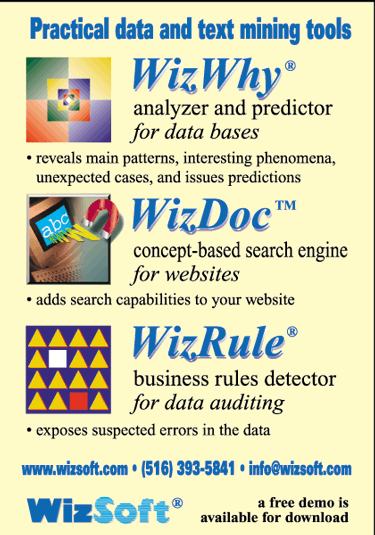come from actions, then
a problem is a reason for action. While we are alive, our body is
always in action, and therefore solving a problem. Even the most basic
of human actions such as breathing and locomotion solves the problems
of homeostasis and travel.
Using this information to develop a logical snapshot,
we
define a human as a being that recognizes discrepancies
between its current state, and its optimal state, and through action
resolves these discrepancies. Now that the fundamental principals
of a human have been defined and a goal for an artificial being has
been created, we need a yardstick by which we can measure our progress
to our goal.
Intelligence
Developing a yardstick requires the development
of a
theory to intelligence. A definition of intelligence
is to an intelligent system, what a definition of value is to an economic
system, without it, there is no system. The theories or definitions
describing intelligence have always been weak, focusing on a being's
ability to learn or understand. We will focus on what intelligence
is: the ability of a being to discover and manipulate relationships
between itself, events, and objects in the real world.
Returning to the notion of a problem, what causes
a
problem? Discrepancies are conflicts in the relationships
between a current and optimal state. If we exist to resolve discrepancies,
and these discrepancies are conflicts in relationships, then beings
exist to discover and manipulate relationships. Therefore, a being's
ability and efficiency at discovering and manipulating these relationships
determines that beings intelligence level.
While walking down a road, there are hundreds of
relationships being monitored and manipulated every
second. These relationships include: your feet in relation to the
ground, your current position in relation to the destination, and
your body in relation to objects around you such as cars, and buildings.
Consider the scenario of writing a letter to a business associate.
The fact that a letter is written assumes there is a relationship
between the writer and the other person. During the letter writing
process, the writer is constantly monitoring relationships such as:
the words used in relation to the actual thoughts, the hand's position
in relation to the pen and paper, and the writing in relation to how
the receiver of the letter will interpret it.
There is also a relationship between the interpretation
of the person who receives the letter and its intended
meaning. A misunderstanding in communication, whether written or spoken
is due to a flaw in a relationship. This flaw can be due to a bad
relationship between the communicated word or idea, and the receiver's
interpretation of that word or idea.
Intelligence Scale
To use intelligence as a yardstick, we must develop a
method for its measure. Based on our definition above, every living
being, from ameba to human has some degree of intelligence.
A species' intelligence is determined by its location on an intelligence
scale, which is subdivided into five plateaus.
1. Logic
2. Movement
3. Communication
4. Mathematics
5. Philosophy
|
|
Logic - the basis of all intelligent thought
and therefore problem solving. To be considered intelligent, a being
must have the ability to behave logically. The use of logic to solve
problems does not guarantee a correct result; it only guarantees
a consistent one. An action performed using only logic is nearly
identical each time it is required. It is difficult to determine
if logic should supersede the next plateau, which is movement. However,
most movement is logical, and therefore requires the logic plateau
as a foundation.
Movement - the ability to navigate a 3D space,
either moving through self-propulsion, or using an external propulsion
system. When a being performs locomotion, it establishes a goal
location and constantly deter-mines its position and its relationship
to the surrounding environment and its goal destination. Since
an accurate bearing is required for intelligent movement, the
being needs to analyze impulses from the senses.
Touch - This most primitive sense for movement is fundamental
to collision detection. The ability of a being to detect a collision,
reevaluate its situation, compensate, and continue to move on
to its goal destination is an example of the most basic locomotion.
A simple example of this is an Ameba's ability to detect and engulf
its food with pseudo pods.
Sight - This second sense is fundamental to collision avoidance.
A being uses sight to evaluate and adjust its movement before
entering a new 3D space. The goal of sight-based movement is to
avoid contact with external objects.
Hearing, smell, and taste - These senses, while not specifically
designed for navigation, do provide position reinforcement - estimating
one's
 |
|